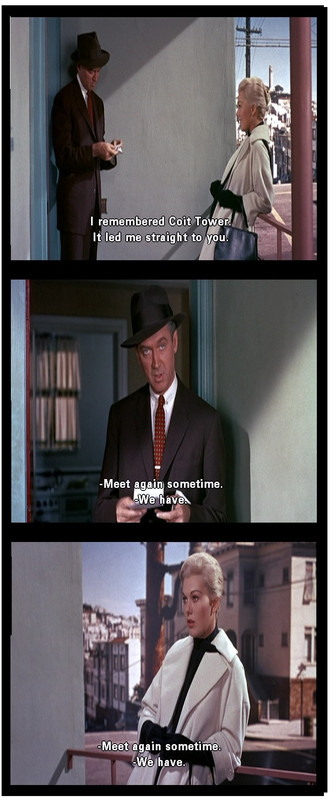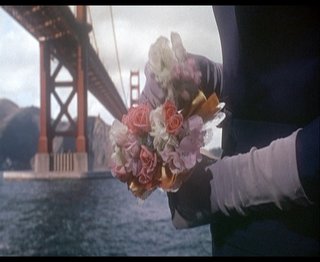Page 3 of 3
Posted: Wed Sep 02, 2015 7:38 am
by sgt.null
peter wrote:Interesting that Agatha Chriatie's The Mirror Crack'd From Side to Side is based on her giving birth to a child with severe disabilities as a result of accidental exposure to Rubella during pregnancy, and that Howard Hughs's kind support and financial aid in the care of her daughter was never forgotten by Tierney.
I learn new things every day.
so how goes the film school Peter?
Posted: Wed Sep 02, 2015 2:35 pm
by peter
Somewhat slowly Sarge. Hitchcock films do appear on Netflix but not as quickly as I'd hoped. You can see a number on YouTube - but I'm not a fan of watching stuff on my laptop, because my back doesn't hold out to well. But slowly I'll whittle them down [and it's always fun to spot the man in his 'man in the street' roles].
Posted: Tue Sep 08, 2015 4:25 am
by sgt.null
my back also balks at the time i sit here on the Watch, since my comfortable office chair broke.
Posted: Thu Feb 25, 2016 3:27 pm
by JIkj fjds j
Enjoyed watching,
Spellbound. A film not only about psychoanalysis but a film one might have lots of fun psychoanalysing.
An interesting movie device that Hitchcock used, when Peck and Bergman kiss for the first time, was the doors within doors. According to Freudian theory this represented trust, giving, and opening. In the Last Chronicles -
This reminded me of Linden Avery's attempts to use her white gold ring, (was it in Runes of the Earth?) also described as doors within doors. Is it possible Stephen Donaldson borrowed Hitchcock's device or went straight to the source, in Freud's Interpretation of Dreams? I would hope it to be the former.
After all, he has been known to add profuse amounts of chlorine to his stories! <grin>
Posted: Mon Jun 15, 2020 4:43 pm
by Lazy Luke
Watched 'Vertigo', and although the film may not be thought of as Hitchcock's definitive masterpiece, I certainly think it's his most honest.
sgt.null wrote:I loved looking for his cameos. Lifeboat was a weight loss ad, I think?
I'd always wondered if his cameo's gave some insight into the stories but could never see how the ideas were put into action. However, in 'Vertigo', Hitchcock is seen walking along the street carrying a trumpet case, so, was pleasantly surprised to hear trumpets used as a way to cue certain actions that would otherwise not have made it past the censorship codes of 1958.
In other words, the direction given to Bernard Herrmann on how the film was scored gives us an insight into where, when, and why, Jimmy Stewart gets the horn for Kim Novak.
This obviousness, or honesty, can also be seen in the distance through Jimmy Stewart's apartment window - the Coit Tower on Telegraph Hill in San Francisco - which looks like a big nob. But, if seen up close, looks more like the bell tower at the Mission San Juan Bautista, where the film ends.
Hitchcock was never without a sense of humour -
https://en.wikipedia.org/wiki/Lillie_Hitchcock_Coit
Although the film is a 'gumshoe murder mystery' this obvious use of certain structural imagery provides a very rich and detailed psychological profile of the characters involved. Which is by far much more fascinating.
Posted: Fri Jun 19, 2020 3:54 pm
by Lazy Luke
Here are a few snapshots from 'Vertigo', from when Madelaine posts
Scottie a letter thanking him for all his help.
Not knowing his address Madelaine had to deliver the letter
by hand.
Again we see Coit Tower in the background.
Only this time the actors even mention it by name.
On reading the letter Scottie tells her that 'He hopes they will'.
To which she replies, 'Will what?' -

Strange coincedence
In The News Today, is all.
Posted: Fri Jun 19, 2020 4:24 pm
by Lazy Luke
Furthermore ...
On closer inspection of the Alfred Hitchcock cameo, where he appears to be carrying a trumpet case, this may not be entirely accurate. It actually looks more like an expensive case for a Doctor Plague
mask.
(The reason for the long beak was so the doctor could fill with flower petals. The idea was that the flowers would protect the doctor from miasma.)
This ties in with the Carlotta Valdes bouquet, however ...

in light of current events, maybe such discussion would
best be served some other time.
Posted: Sun Jun 21, 2020 2:21 pm
by Lazy Luke
So in conclusion, this is a great movie for playing detective. If one is so inclined there is a very clever trail of bread crumbs the audience can follow in order to solve the mystery. Not the mystery of Scottie's vertigo, he must solve the crime of murder first before he can face the challenge of his neurosis - climbing the remained steps to the bell tower.
'If I can just find the key, the beginning ...' says Scottie.
The murder plays out like the performance of a magician and the skillful distraction of his hot assistant. But with a little empathy for the characters the unravelling of the mystery has a wonderful pay off. Like Neo in the Matrix stepping through the door of light!
There is a scene in the hospital during Scottie's acute melencholia episode, where he is visited by his friend Midge. She plays him music as a form of therapy. 'Everything will be allright', she tells him, 'Mother is here'.
Music transcends time. From Asclepius to Enya music has been used to help heal the sick. But I can't help wonder, under controlled circumstances, films can also be used with equal effect.
Interestingly, the Board of Ethics in Film would not allow Vertigo to be released unless the villian was seen to be brought to justice. Hitchcock fought hard to get the film released with its original ending - Scottie standing on the ledge of the bell tower looking down for a second time at the dead body of Madelaine Elster/Judy Barton.
I think the ending had to be this way so as to make Barbara Bel Geddes represent an end to illusion and a return to reality. When you think about it, the perfect therapeutic construct for a complex psychosis.

